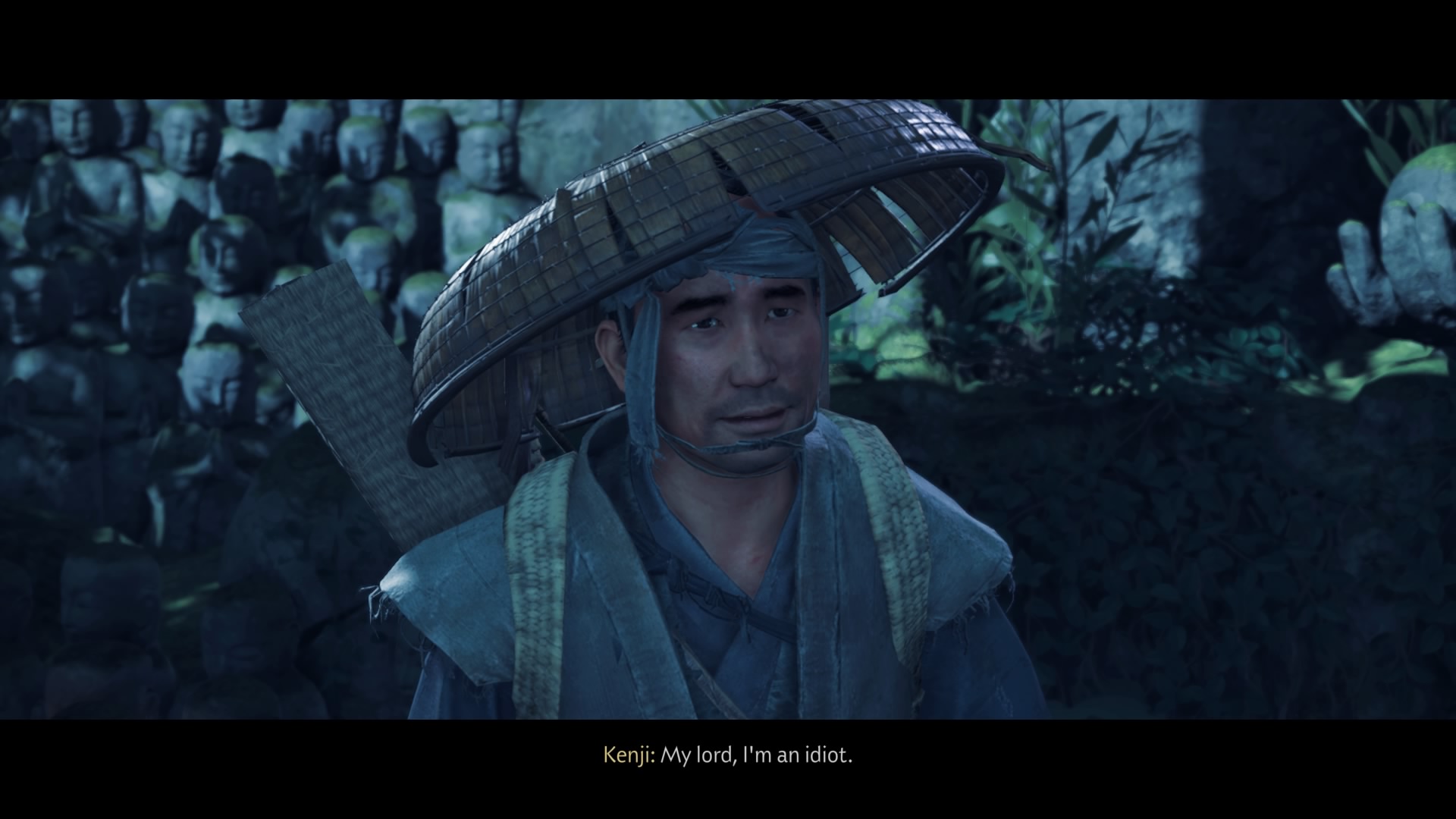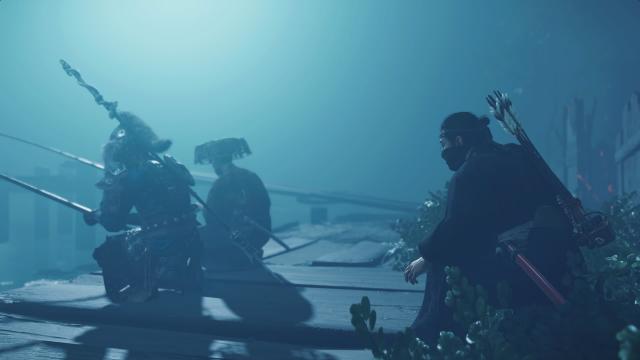As of this week, Jin Sakai and the open-world samurai game he stars in — Ghost of Tsushima — turn six months old. Rather than a one-off, Ghost of Tsushima has received an impressively dedicated level of support from developer Sucker Punch with consistent quality-of-life upgrades, new difficulty levels, and a (surprise!) cooperative expansion. Small wonder it was one of the best-received games of 2020. Here’s how it got there.
- During the 2017 Paris Games Week, developer Sucker Punch announced Ghost of Tsushima is in the works for the PlayStation 4 with a slick trailer. Lots of fire and drama. No release date.
- At E3 (remember those?) 2018, Sucker Punch dropped a gameplay trailer for the game. Still no release date.
- That week, Sucker Punch’s Nate Fox spoke to Kotaku on a wide range of topics, including the notion of a setting overlap with Assassin’s Creed. (Fans of Ubisoft’s stabby-stabby series have long clamored for a Japan-set game.) Sucker Punch did not compare notes with Ubisoft before kicking off Ghost’s development. “Last E3, I was sweating bullets,” Fox said. “I was happy their game was set in Egypt.”
- Ghost of Tsushima stayed out of the limelight for a bit, until March 2020, when Sony announced a release date: June 26, 2020.
- Ghost of Tsushima was delayed to July 17, 2020.
- During a lengthy gameplay demonstration in May, Sucker Punch showed off the cornerstones of Ghost’s features, from combat to customisation. Most importantly, the studio confirmed what every player on the planet wanted to know: Yes, you could pet the foxes.
- A week before launch, four electronic musicians — Tycho, TOKiMONSTA, The Glitch Mob, and Alessandro Cortini — collaborated on a four-track EP featuring remixes of Ghost’s soundtrack. Sound of the Storm – Ghost of Tsushima Soundtrack: Reimagined was so good that some people even stopped listening to “Lo-Fi Beats to Chill/Study/Relax to” for a second.
- Ian Walker reviewed Ghost of Tsushima for Kotaku on July 14, 2020. Ian wasn’t so taken with protagonist Jin Sakai or with the repetitive mission structure, but got a real kick out of the combat, the eye-popping visuals, and the supporting cast. (Some inside baseball for you, courtesy of the Kotaku Slack: Ian even liked Kenji. Yeah. That Kenji.)

- Critics in Japan largely praised Ghost of Tsushima. Famitsu, the popular video game magazine, awarded Ghost a perfect score — the third western game in history to achieve such an accolade from the publication. (The other two? Grand Theft Auto V and The Elder Scrolls V: Skyrim.)
- Ghost of Tsushima famously loads at the speed of sound. Speaking to Kotaku, Sucker Punch’s Adrian Bentley said that, at one point in development, Ghost loaded so quickly that the team had to essentially nerf the load speeds. Otherwise, players would miss the on-screen tips. Oh, whatever would they do?
- Kotaku’s Brian Ashcraft went deep on comparing Ghost’s depiction of sake production to what the process would really be like in 13th-century Japan. Short version: It’s not spot-on, but the inaccuracies don’t detract from the game. The takeaway is in line with what Brian wrote about the game in 2018, that “the game’s creators aren’t striving for a history lesson, but rather, aiming to evoke a time and a place.”
- The Nagasaki Prefecture Convention and Tourism Association (NPTA) created a site pinpointing locations from Ghost of Tsushima you could visit IRL, including Komoda Beach and the ruins of Kaneda Fortress.
- Between the moments of violence, Ghost of Tsushima featured a handful of placid mini-games, including one in which you soak in the scenery and compose a haiku. Many of the resulting poems read like binned My Chemical Romance lyrics. (Exhibit A: “Brilliant it blossoms/Struggle and cry out for help/Shattered, but alive.”) Experts agreed. “None of these are even close to competent haiku, if you are interested in the history and value of the genre,” Jim Kacian, the founder and director of The Haiku Foundation, told Kotaku.
- Players very quickly cracked the code of Ghost’s combat. The combat system is a science, but it’s also, as this viral clip proved, an art.
- On July 27, 2020, Sucker Punch released the first patch for Ghost of Tsushima, adding some accessibility options (including multicoloured text) to the game. Patch 1.05 also saw the addition of Lethal mode, which is both more and less difficult than the game’s Hard difficulty tier.
- Ghost of Tsushima’s photo mode proved to be an effective showcase for some seriously stunning screenshotography.
- Sega’s Toshihiro Nagoshi sung the praises of Ghost of Tsushima, including the Kurosawa Mode, but said that the game should’ve been made in Japan. He also called Jin Sakai “[not] particularly handsome.” Yes, some things can cut deeper than a katana.
- Two words: Hot springs.
- On August 17, 2020, Sucker Punch announced that Ghost of Tsushima would receive a surprise cooperative expansion, called Legends, at no extra cost. An accompanying trailer showed off four player classes and some mythological imagery. Release date: The ever-vague “Fall 2020.”
- In early October 2020, Sucker Punch dropped details about Ghost’s 1.1 patch. In addition to a new-game plus mode and the inclusion of an in-game accessory that would let you pet the dogs, the patch would also see the launch of Legends. Oh, yeah, and it would finally (finally!!!) add support for gear loadouts.
- Legends landed with a bang on October 16, 2020. Rather than some tacked-on afterthought, Legends was nearly as meaty as a full game. Two players could buddy up for the campaign, a nine-mission narrative featuring magical elements that weren’t present in the base game. A survival mode allowed four players to team up for wave-based battles across four expansive maps. Both of those modes were available in three difficulties, and there was also a robust gear system, complete with a Destiny-style Power level. High-level players could take on “The Tale of Iyo,” a three-chapter raid that became available on October 30, 2020.
- Ghost of Tsushima was nominated for eight awards, including Game of the Year, at the 2020 Game Awards. It won for Best Art Direction, and also took home the Players Voice award.
- For about a month around the holidays, players of Legends could unlock costumes themed after other marquee PlayStation games, including God of War and Bloodborne.
- As reported by Siliconera, fans of Ghost raised more than 27 million yen to restore the destroyed Torii gate at Tsushima’s Watatsumi Shrine, blowing the crowdfunding campaign’s initial target of 5 million yen out of the water. The restoration project is set to begin in April 2021.
And that’s where things are at. Sucker Punch hasn’t confirmed anything about additional expansions or a possible sequel, but Ghost of Tsushima picked up a raft of accolades, remains popular (you’ll have no trouble finding a match in Legends), and is Sony’s fastest-selling new PS4 IP (sorry, Horizon Zero Dawn). It’d sure be a surprise if this is it.

Leave a Reply